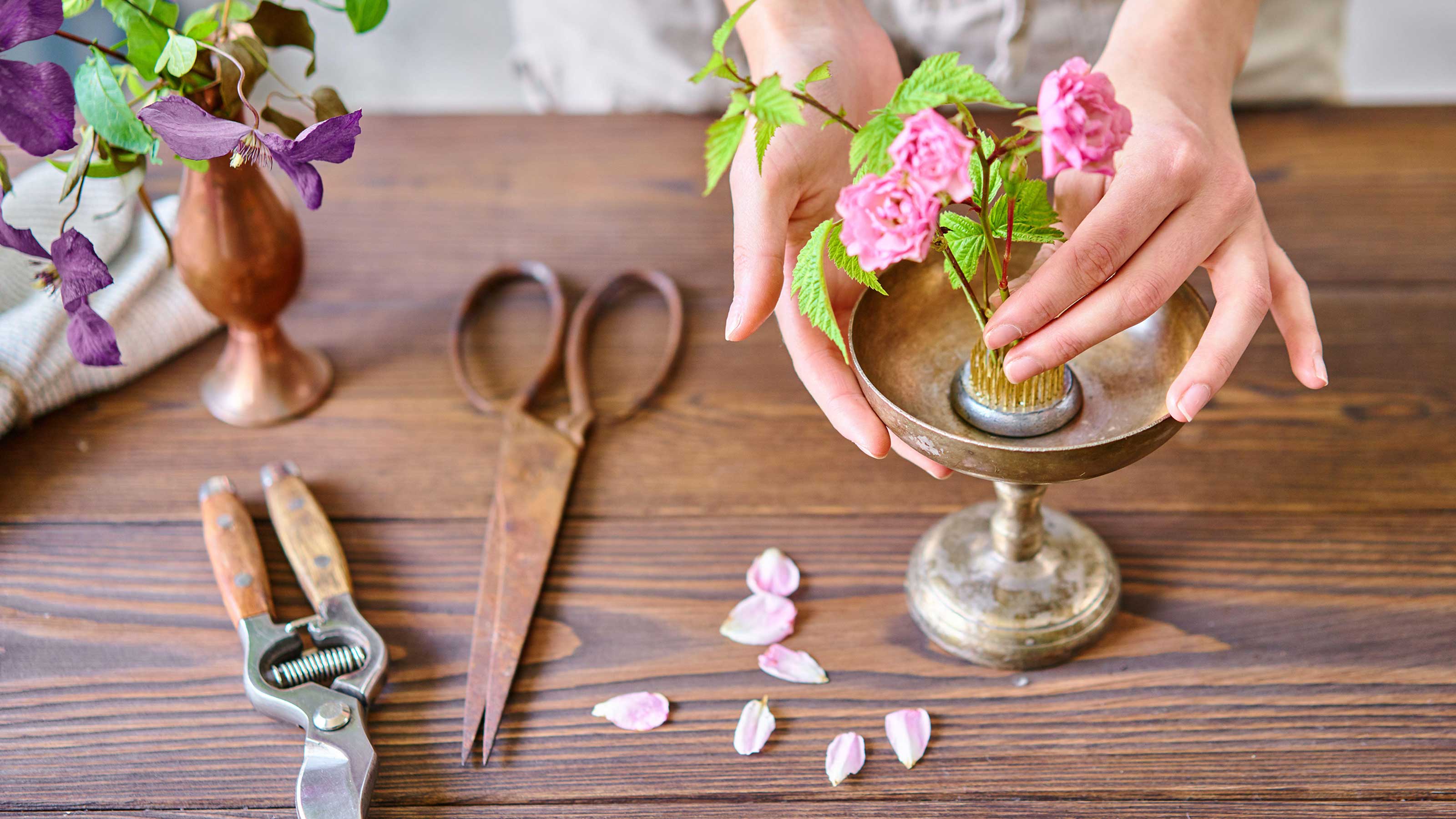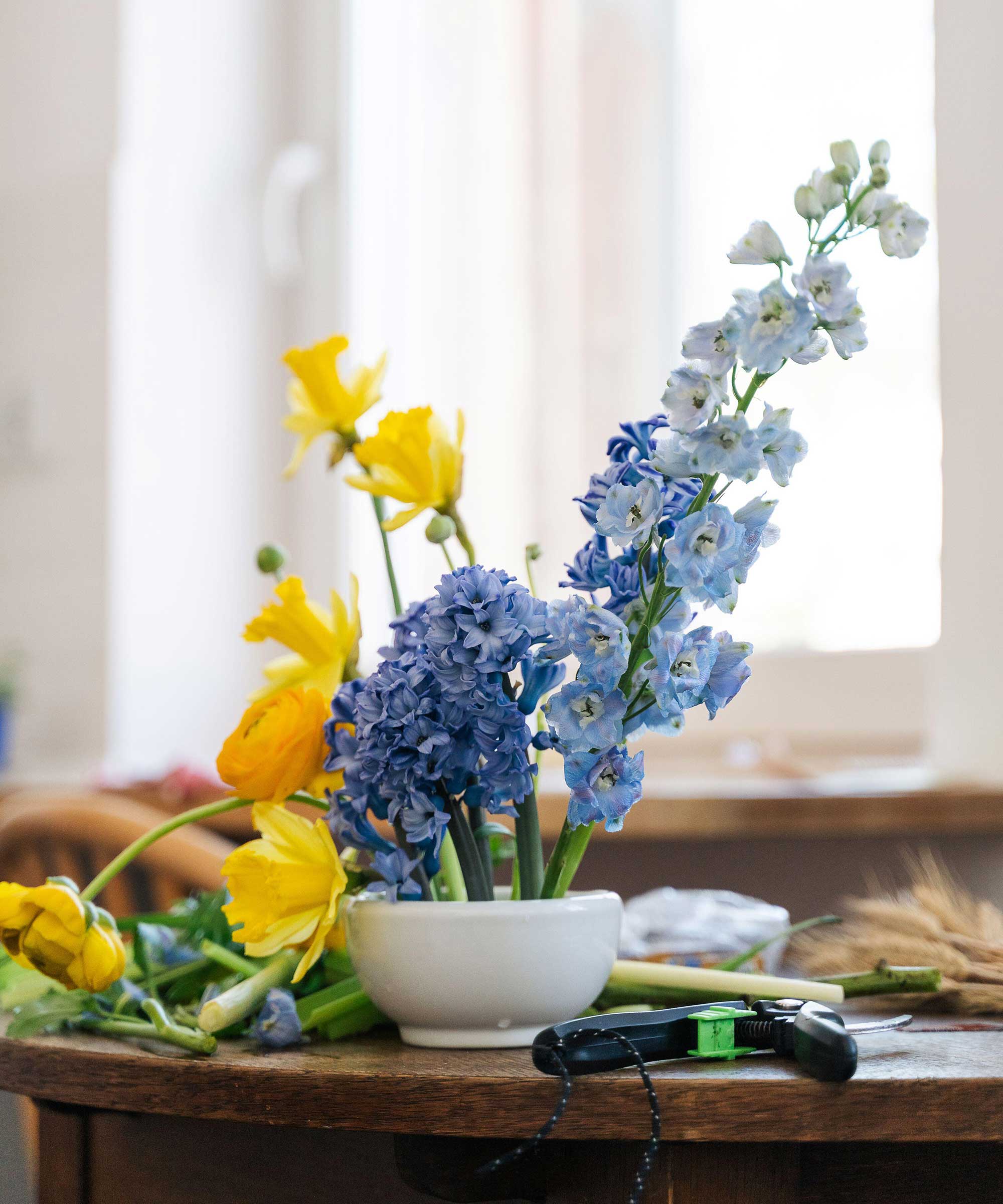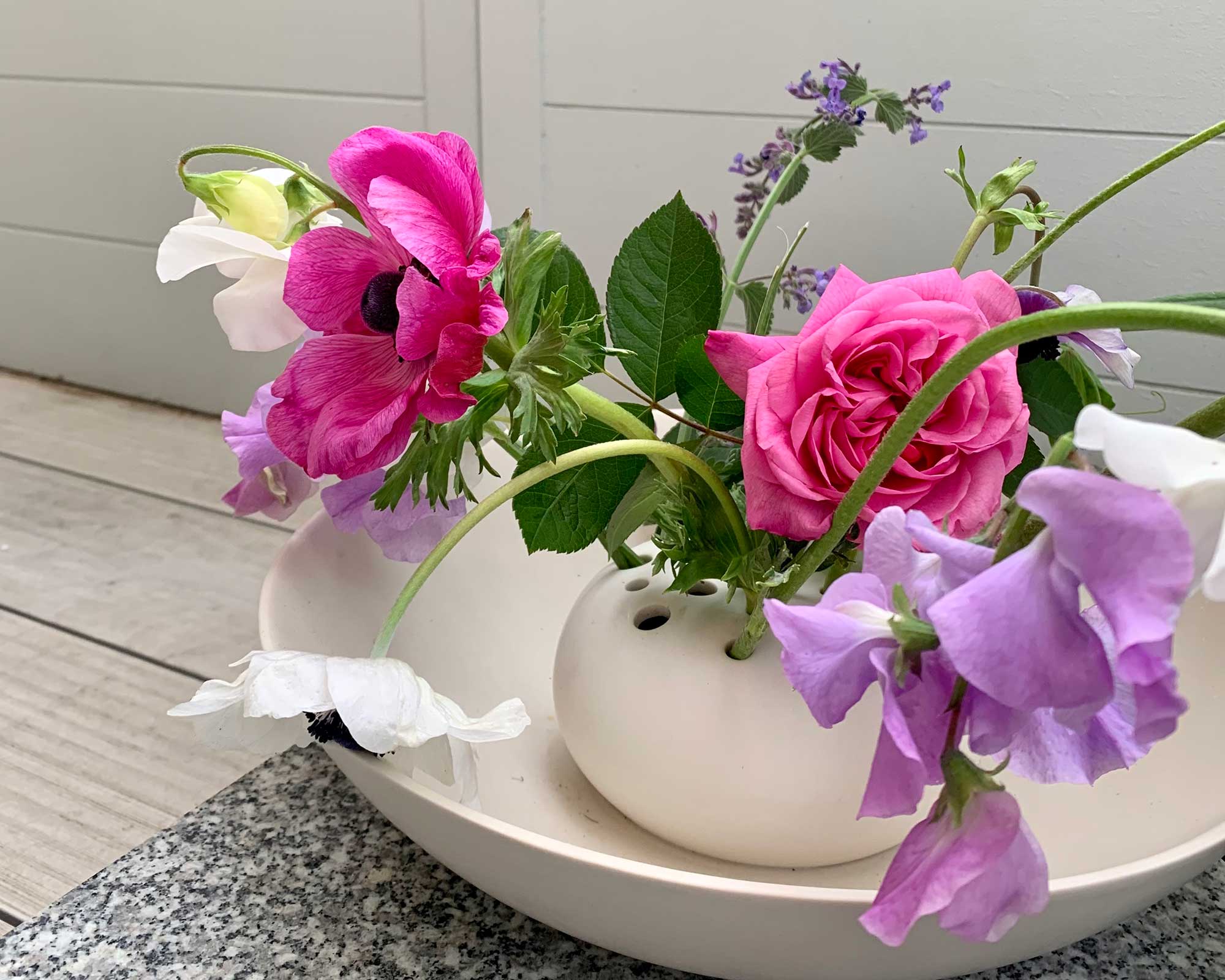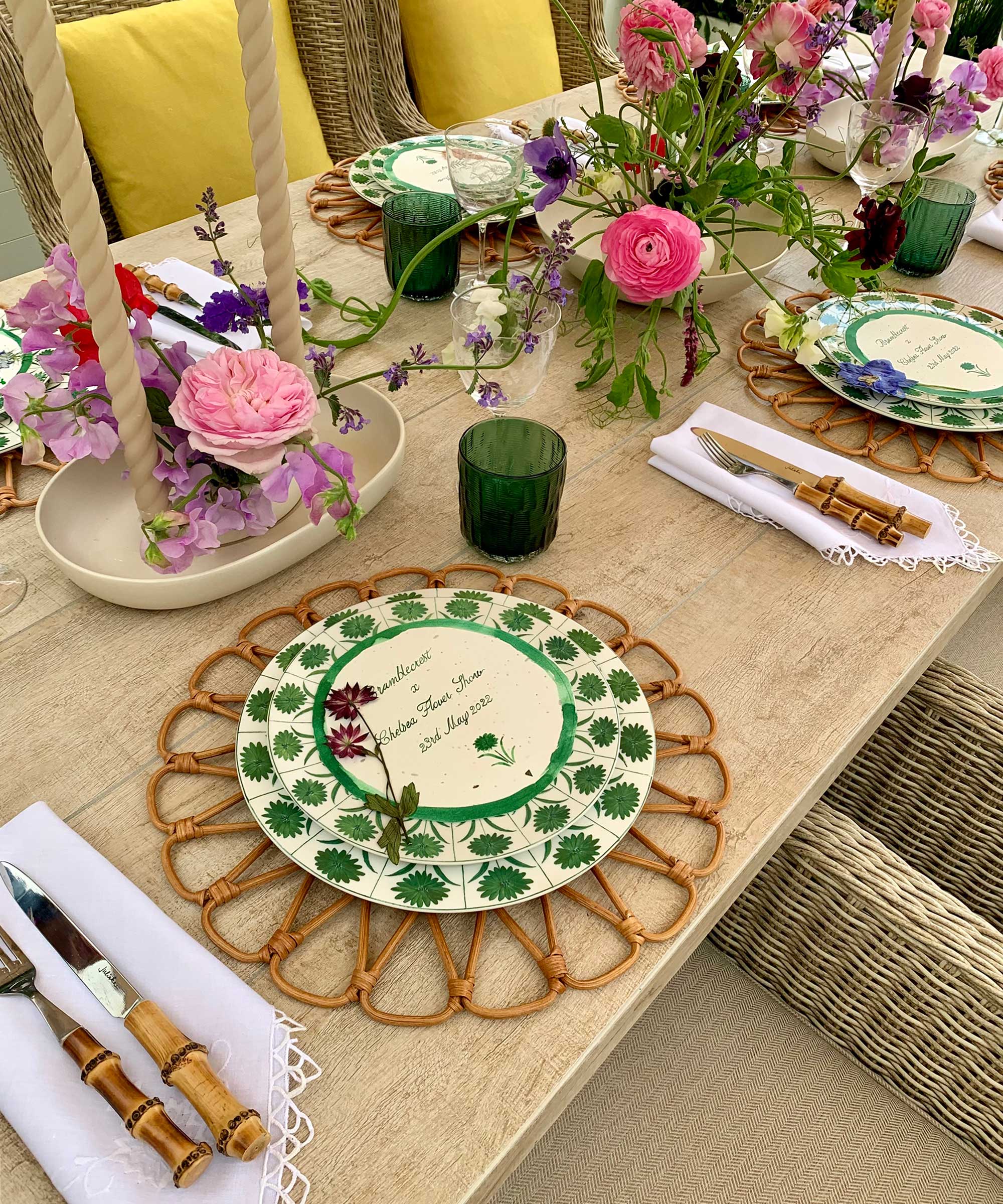This trick from a tablescaping expert is a must-try for fabulous floral displays
Elevate your alfresco get-togethers around the table with this gorgeous flower arranging technique


For a special occasion, a dining table isn't complete without a posy or two of flowers, whether you're hosting indoors or out. And there are all sorts of ways to display them.
A jumble of jam jars filled with wildflowers adds a touch of whimsy to a laid-back summer lunch. A scattering of ceramic vases down the center line could be filled with dried foliage and twigs for a sculptural, modern look. A patterned jug bursting with bright bulbs can make a gorgeous springtime focal point. You can even try floating flowers in a glass bowl filled with water as part of your outdoor dining ideas. The list goes on. But one approach you may not have thought of is the use of a flower frog.
World-renowned events designer Fiona Leahy brought flower frogs to our attention at a recent tablescaping workshop, in collaboration with Bramblecrest garden furniture. And we loved the results so much that we'll definitely be trying them out for ourselves – and you might be tempted, too.

Flower frogs allow you to create floral pieces of art easily, whereby each bloom can be appreciated fully
What is a flower frog?
A flower frog is a type of container or apparatus used in floristry. What makes them special is that they are constructed with multiple holes, meaning you can arrange stems individually, unlike a standard vase. Some are decorative, some can be slotted together with others (each with different-sized holes for different-sized flowers), and some are small and inconspicuous and can be hidden at the bottom of a larger vessel.
You can also get flower frogs that are disc-like and covered in lots of little spikes, known as pin frogs. Instead of slotting stems in holes, you push them down onto the spikes to create an upright and beautiful scene. These are best suited to slimmer, more delicate stalks.
Flower frogs are traditionally used in ikebana – the Japanese art of flower arranging. But these nifty tools have come in and out of fashion over the years all over the world, in all sorts of floristry schemes. Because of this, you can often find them in thrift stores, so it's worth keeping an eye out if you fancy adding them to your own outdoor table decorating ideas.

Fiona Leahy showed us how to create pretty floral arrangements using a flower frog
By using a flower frog to space blooms out individually, each can be appreciated fully. They offer plenty of scope for getting creative.
'Because of the holes, you can randomly assort the flowers,' says Fiona. 'To me, it feels like bringing a wild meadow onto the table but with a little bit of structure –because you need structure, of course, as well.'
In her workshop demonstration, she curated a display using an array of summer favorites, including scented sweet pea varieties, roses, and anemones. Arranged in a flower frog from The Floral Society, the whole look had a natural and certainly romantic air, with the blooms elegantly reaching out across the table. 'I adore flowers coming out and kissing the glasses – the tendrils being on napkins,’ she says.
Fiona adds how usually, to create this sort of arrangement, you'd need to use oasis. This is not good for the environment at all, as it doesn't really recycle or break down, she says. A flower frog makes an eco-friendly alternative, that you can use again and again.

Fiona's tablescape also included beeswax candles and handmade place cards decorated with delicate pressed flowers
With water added to the bottom of your flower frog, or in another vessel that your flower frog then sits in (depending on which design you've gone for), floral arrangements like this can last a few days. Fiona suggests misting the flowers to help them stay fresh for a little longer.
And once the flowers begin to wilt, she suggests pressing them, which you can do in a book or in a special flower press (available on Amazon). You can then use these to decorate the menus or invitations at your next get-together – a lovely garden party idea that's budget-friendly, too.
We're convinced that these floristry tools are the new must-have for showing off homegrown flowers when entertaining guests. And when the seasons change, we can't wait to try them with wintery treasures, too – think jewel-like berries and frosted foliage.

The garden was always a big part of Holly's life growing up, as was the surrounding New Forest where she lived. Her appreciation for the great outdoors has only grown since then. She's been an allotment keeper, a professional gardener, and a botanical illustrator – plants are her passion.
